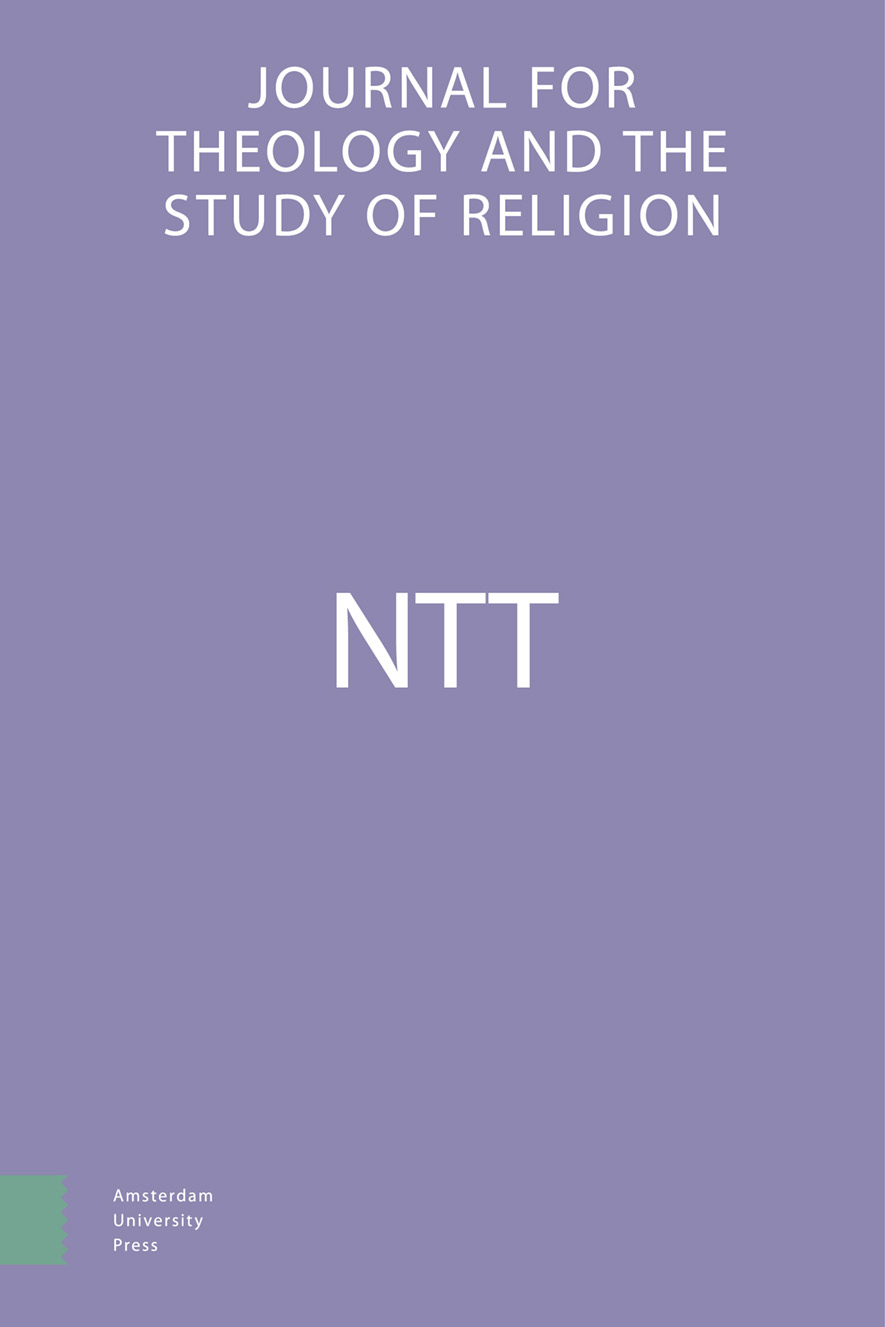- Home
- A-Z Publications
- NTT Journal for Theology and the Study of Religion
- Previous Issues
- Volume 42, Issue 2, 1988
NTT Journal for Theology and the Study of Religion - Volume 42, Issue 2, 1988
Volume 42, Issue 2, 1988
Language:
Dutch
-
-
oa Tekst, structuur en betekenis van Joel 2:1-11
More LessAbstract Joel 2:1-11 shows the structure of concentric symmetry; the theme of the Day of YHWH forms the inclusion (vs. 1, 2a; 10, 11) and the centre (vs. 6) of the pericope. In between one finds the description of a plague of locusts, beginning and ending with theophanic motifs. These motifs as well as those of the Day of YHWH do not indicate that Joel 2:1-11 is meant as a description of (apocalyptic) enemies threatenin Read More
-
-
-
oa Geven als vreemdeling
More LessBy T. BaardaAbstract This contribution deals with the peculiar addition (§ 2, 1-2) in Matth. 17, 26, found in ‘Codex Algerinae Peckover’ (Scr. 561, Sod. ε 351, Greg. 713) now preserved in Selly Oak College, Birmingham. This medieval cursive (§ 3, 1-3), which betrays not a few affinities with the Ferrar group of minuscels, has undergone the influence of Syriac and Tatianic tradition. The addition of 713 is also found in the Diatessaron (§ 4 Read More
-
-
-
oa Vernoemen in de antieke wereld. De historische achtergrond van Luk. 1, 59-63
More LessAbstract The habit of naming children after (grand)parents can hardly be traced in the O.T. and is not corroborated by pre-exilic epigraphical data, in contrast with neighbouring countries like Egypt or Phoenicia. Its first appearance among Jews is at Elephantine c. 500 B.C. In Palestine it emerges only after Alexander, no doubt in imitation of the Ptolemies and Seleucids. Instances are given from the aristocracy and the ‘Goliath fam Read More
-
-
-
oa Silvanus en de Griekse gnomische traditie
More Less*Een beknopte versie van dit opstel werd op 26.8.1987 voorgedragen op de tiende patristische conferentie te Oxford. Het doet mij genoegen het te kunnen opdragen aan Jannes Reiling, die voor de Utrechtse faculteit zoveel betekend heeft.
Abstract The Teachings of Silvanus (NHC VII, 4) show some influence of the Greek gnomic tradition. NHC VII, 102, 16-22, contains a combination of Sentences of Sextus, 352 and 22, which is also found in Origen (apud Epiphanius, Panarion 64, 7, 3). Both Origen and Silvanus reflect a later stage in the tradition of the Sextine sentences, in which originally independent maxims had been put together. The same phenomenon can be Read More
-
-
-
oa De Samaritaanse diaspora in de oudheid
More LessAbstract This article surveys the evidence, both literary and archaeological, for a Samaritan diaspora from the third century B.C.E. till the seventh century C.E. It stresses the importance of distinguishing between Samarians (inhabitants of Samaria) and Samaritans (members of the Samaritan religious community) and concludes that there must have been a very considerable Samaritan diaspora in late antiquity, in spite of the f Read More
-
Volumes & issues
-
Volume 79 (2025)
-
Volume 78 (2024)
-
Volume 77 (2023)
-
Volume 76 (2022)
-
Volume 75 (2021)
-
Volume 74 (2020)
-
Volume 73 (2019)
-
Volume 72 (2018)
-
Volume 71 (2017)
-
Volume 70 (2016)
-
Volume 69 (2015)
-
Volume 68 (2014)
-
Volume 67 (2013)
-
Volume 66 (2012)
-
Volume 65 (2011)
-
Volume 64 (2010)
-
Volume 63 (2009)
-
Volume 62 (2008)
-
Volume 61 (2007)
-
Volume 60 (2006)
-
Volume 59 (2005)
-
Volume 58 (2004)
-
Volume 57 (2003)
-
Volume 56 (2002)
-
Volume 55 (2001)
-
Volume 54 (2000)
-
Volume 53 (1999)
-
Volume 52 (1998)
-
Volume 51 (1997)
-
Volume 50 (1996)
-
Volume 49 (1995)
-
Volume 48 (1994)
-
Volume 47 (1993)
-
Volume 46 (1992)
-
Volume 45 (1991)
-
Volume 44 (1990)
-
Volume 43 (1989)
-
Volume 42 (1988)
-
Volume 41 (1987)
-
Volume 40 (1986)
-
Volume 39 (1985)
-
Volume 38 (1984)
-
Volume 37 (1983)
-
Volume 36 (1982)
-
Volume 35 (1981)
-
Volume 34 (1980)
Most Read This Month
Article
content/journals/25426583
Journal
10
5
false
en

Most Cited Most Cited RSS feed
-
-
oa How to read Philo
By D. T. Runia
-
- More Less

